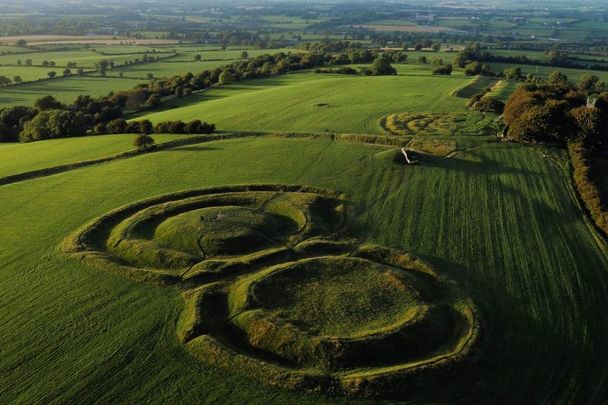A new plan has been published for the conservation of the Hill of Tara in Co Meath as an archaeological site and a national landmark.
A plan to preserve and develop the Hill of Tara was developed by a number of groups, including the Office of Public Works (OPW), the National Monuments Service, and Meath County Council, and presented at a monthly meeting of the Meath County Council on Monday, January 30.
The plan aims to develop a visitor navigation plan and carry out conservation work at the site's existing visitor center, while it also aims to promote the cultural significance of the ancient site.
Meath County Council is also in the process of acquiring additional property to extend the car parking facilities near the site.
The 10-year conservation plan was originally launched last September.
A new 10 year Conservation Management Plan has been published for the Hill of Tara. It reflects the commitment of @meathcoco, @DeptHousingIRL & @opwireland to one of Ireland’s most important archaeological and cultural landscapes.
Read more: https://t.co/tPtKgCTqUt pic.twitter.com/A2Q6HbLQqn
— Meath County Council (@meathcoco) October 3, 2022
Local Fianna Fáil councilor Tommy Reilly welcomed the publication of the new plan last week but said it is long overdue.
Reilly told local radio outlet LMFM that the deterioration of the site over the last 30 years has been a "national disgrace" and said organizations such as the OPW "should hang their heads in shame."
Malcolm Noonan, the Minister of State with Responsibility for Heritage and Electoral Reform, said at the time that the Hill of Tara holds a "special place" in many Irish hearts.
"As we balance our protection of the site with the use by so many for leisure, this framework is an important step in ensuring this balance can be met, working with visitors to ensure the heritage is understood and protected," Noona said.
One of the most important historical locations in Ireland, the Hill of Tara was the seat of the High Kings of Ireland and also boasts significant ties to St. Patrick and the spread of Christianity.
The site drew more than 182,000 visitors in 2021 and is one of six ancient Irish sites that has been included on Ireland's "tentative list" for UNESCO World Heritage Status.




Comments